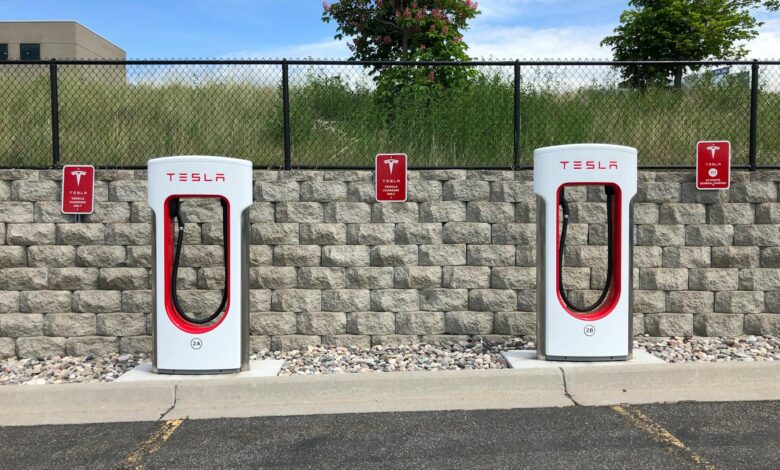How Pre-Owned Electric Vehicles Make Supporting Environmental Sustainability Accessible

There’s no question that EVs are truly a mainstream proposition today – so long as you’ve got the cash to spare to buy a new model.
Given that the average price paid for one according to data from Kelley Blue Book was just over $55,000 in April of 2024, there are plenty of people who want to make their driving habits more eco-friendly, but simply can’t justify the expense.
Luckily we’re seeing second hand electric vehicles become significantly more affordable as a result of the growing market size and the plethora of models available, which means that they’re no longer as unattainable as they once were for the average person.
Let’s take a look at how this is playing out, and what this means for motorists on an average income of around $37,000 a year.
Explaining the Surge of Second-Hand Electric Vehicles
It’s expected that 1.27 million new EVs will roll out of dealerships this year, but it’s the used market that’s much more tantalizing – with even top tier brands like Tesla being available for around $25,000.
Here’s why and how this trend is evolving:
Increased Availability
Just five years ago, options for buying a used electric vehicle were limited. Fast forward to today, and it’s a different story. More electric cars on the roads mean more entering the second-hand market as early adopters trade up to newer models or leases expire.
Affordable Prices
Depreciation hits hard in the car industry but typically benefits latecomers in the EV space.
For example, models like the 2020 Nissan Leaf or Chevrolet Bolt can now be found at half their original sticker price. It’s just a case of connecting with reputable local dealers to get good prices on quality used EVs and other vehicles. So, for instance, if you’re based in Atlanta, looking for a pre-owned EV in Duluth is a savvy and safe move.
Improved Battery Life
One major concern with older EVs was battery degradation; however, advancements in technology have led to batteries retaining efficacy for more extended periods.
A used Tesla Model S might still maintain around 90% of its battery capacity even after five years of service – while the official warranty guarantees at least 70% capacity retention for as long as coverage lasts.
This increase in supply and improvements in technology not only make pre-owned electric vehicles an attractive option financially but also an environmentally sound one – allowing a broader range of consumers to participate in eco-friendly driving practices without breaking the bank.
Shifting Consumer Perceptions
The acceptance of pre-owned electric vehicles is fueled by a noticeable shift in consumer attitudes towards sustainability and second-hand goods. As concerns about climate change deepen, more people are willing to consider EVs as a legitimate alternative to new gasoline-powered vehicles.
Here’s how perceptions are changing:
Environmental Awareness
Consumers are increasingly aware of their carbon footprints – which, on average, are around 14 tons annually. Choosing a used electric vehicle over a new internal combustion engine vehicle can save approximately 6 to 8 tons of CO2 per year, according to data from the Environmental Protection Agency (EPA).
Quality Assurance Advances
The enhancement in inspection, certification, and refurbishment programs for EVs has boosted buyer confidence. For instance, certified pre-owned programs like Tesla’s include thorough battery checks and offer extended warranties. So, while the new Model 3 might be tempting, the first-gen is still well worth checking out.
Government Incentives
Many regions offer tax rebates, subsidies, or other incentives for buying used electric cars just as they do for new EVs. The clean vehicle tax credit, worth up to $7,500, is a good example of this.
These evolving perceptions are crucial in driving the growth of the pre-owned EV market; they not only support environmental sustainability but also make economic sense in long-term savings on fuel and maintenance.
The Sustainability Impact

Adopting pre-owned electric vehicles extends the environmental benefits of green technology far beyond just reducing emissions during driving. This practice supports a circular economy and lessens the broader automotive industry’s impact on the environment.
Here are some crucial aspects where used EVs contribute to sustainability:
Reduced Manufacturing Demand
The production of new vehicles is resource-intensive, involving significant raw materials and energy, particularly for batteries. Purchasing used EVs means consumers reduce the demand for new vehicle production, thereby conserving resources – while also counteracting the fact that 15% of all carbon emissions come from road vehicles at the moment.
Extended Vehicle Lifespan
Electric cars are generally designed to last longer due to fewer moving parts that could wear out. Keeping them in circulation longer ensures that the energy and materials invested in manufacturing these vehicles are utilized to their fullest potential.
Recycling Opportunities
As the EV market matures, systems for recycling and repurposing electric vehicle batteries improve. For example, companies like Redwood Materials are developing advanced methods to recycle over 95% of lithium-ion battery materials, which can then be reused in new batteries.
Final Thoughts
In short, if you really want to live sustainably, then don’t go out and buy a brand-new EV. Instead, check out the options on the second-hand market and be content that you’re being an environmentally conscientious individual, as well as saving some cash in the process.



